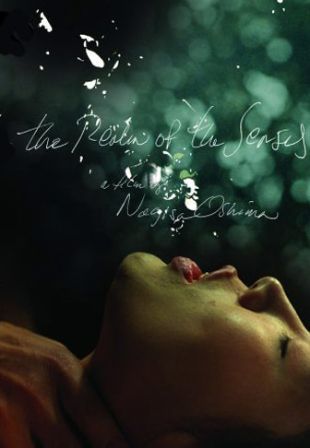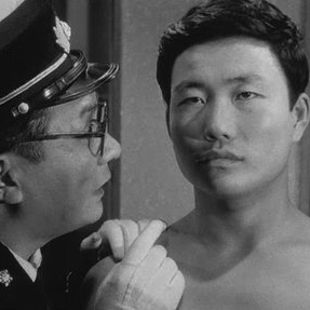Nagisa Oshima was the originator and most famous director of the Japanese New Wave. His controversial films are frequently difficult, highly intellectual, and darkly funny; they revolutionized Japanese cinema by infusing it with sex and with biting social and political commentary.
Born on March 31, 1932, in Kyoto, Oshima was the son of a civil servant of samurai descent. After his father died when he was six, he retreated into a lonely childhood spent devouring his father's library, including a large number of books on Socialism and Communism. By high school, he began looking outward and split his time among student activism, baseball, and theater. Oshima later remarked that Akira Kurosawa's No Regrets for Our Youth (1946), about a Kyoto law professor's tribulations at the hands of the repressive pre-war government, probably influenced his choice of schools. In 1950, Oshima was admitted to the law faculty of Kyoto University and quickly became president of the Kyoto Prefecture Student Alliance. In 1953, he led a mass demonstration in which 70 people ended up injured. Oshima entered his senior year dispirited and was branded a Red Student, which impeded his search for a job. Though he knew nothing about filmmaking, he took the entrance exam at Shochiku Ofuna Studio out of desperation, and he received the highest possible score.
While Oshima worked as an assistant director with Masaki Kobayashi and Hideo Oba, he began writing vitriolic film criticism in 1956. He heaped praise on the new, spontaneous style of films from France and Poland, while chiding the slick, Hollywood-inspired productions that his own studio cranked out every month. Because the studio was in the throes of a financial crisis, producer Shiro Kido decided that it needed new blood, and Oshima, Shohei Imamura, Yoshishige Yoshida, and Masahiro Shinoda, were elevated to the rank of director at about the same time. By 1960, when Oshima released his landmark Cruel Story of Youth, Shochiku was marketing these young directors as the Ofuna Nouvelle Vague, a term that Oshima rejected.
Cruel Story of Youth was a sensation when it opened, an exuberant overturning of Ofuna's slick, commercial formulas. The film was striking in its unprecedented depiction of sex and brutal violence mixed with virulent anti-Americanism and utter nihilism. The film was shot with a hand-held camera, giving it an edgy, defiant style similar to that of Jean-Luc Godard's French New Wave masterpiece Breathless, released a year earlier. Later in 1960, Oshima released Night and Fog in Japan, a cinematic essay bitterly railing against the Japanese Communist Party's failure to stop the controversial 1960 U.S.-Japan Security Treaty. The film was so vituperative that it was pulled from circulation just three days after its release, prompting Oshima, instigator of the Ofuna Nouvelle Vague, to leave the studio and start his own production company, Sozosha.
As the 1960s continued, Oshima's work grew remarkably varied and stylistically extreme, while his narratives shattered and spun in unexpected directions. Cruel Story of Youth revealed a fascination with the criminal act and the oppressed fringes of society that would remain constant throughout his films. Nearly every film depicts a murder, rape, theft, or act of blackmail. Most of these acts are carried out by marginalized members of society, usually women, delinquents, or members of Japan's large, oppressed Korean-Japanese community. Instead of exploiting the luridness of the crimes, Oshima uses them to indict society's hypocrisies: racism against Koreans and capital punishment in Death By Hanging; sexual power dynamics in Diary of a Shinjuku Thief; and the hypocrisies of the post-war generation and narrative itself in Ceremony, with a tone of savage irony reminiscent of the surrealist films of Luis Buñuel.
Oshima's defiance of Japan's unusual censorship laws gained him the most notoriety in the West. Starting from the mid-'60s, a genre of sadomasochistic soft-core films called pinku eiga gained prominence. Although the sex in these films was frequently bizarre and brutally violent, they never showed genitalia. Oshima's unnerving, erotic classic In the Realm of the Senses, based on the real life exploits of Sada Abe, exposed the hypocrisies of Japan's censorship policy by exposing his actors. The film was so explicit that it could not even be developed in the country, and an uncensored print has yet to be officially shown in Japan. Since the 1970s, his film output has slowed. In 1983, he released Merry Christmas, Mr. Lawrence, starring David Bowie and future film auteur Takeshi Kitano, and in 1995, he released 100 Years of Japanese Cinema, an acclaimed documentary on the history of Japanese film.


